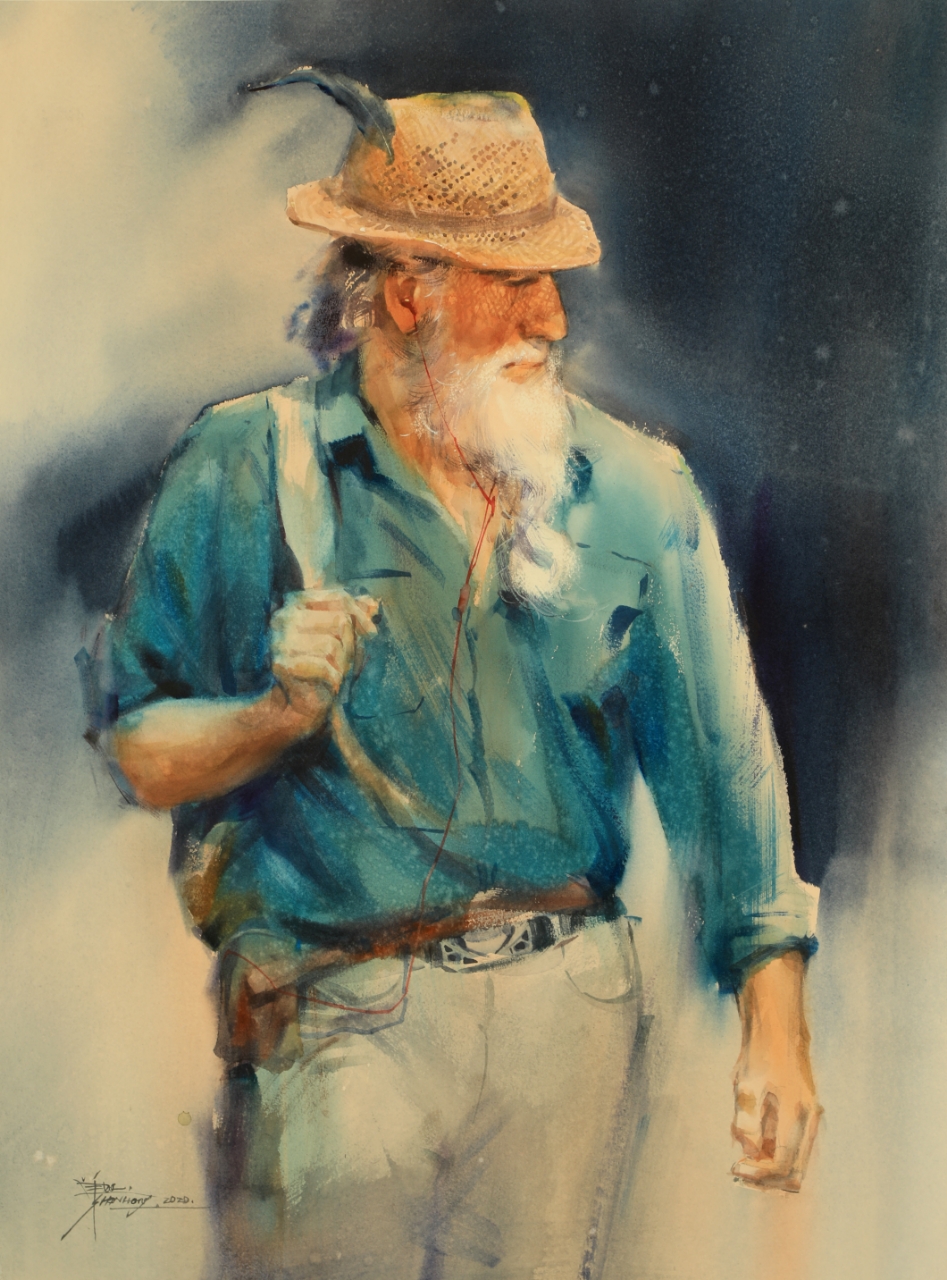SHAN Hong
"Shan Hong, born in 1973 in Qingdao, holds a Master's degree from the University of Applied Arts Vienna and a Ph.D. in Art Anthropology and Art Philosophy from the Vienna Academy of Fine Arts. He is an internationally renowned watercolour artist and contemporary artist, as well as a member of the Chinese Artists Association. He serves as the Director of the International Watercolour Society and is a member of the National Watercolour Society in the United States, as well as an honorary member of the San Diego Watercolour Society. Currently, he lives and works between Qingdao and Vienna."
Shan Hong's artistic style exhibits a certain randomness in the selection of themes, often deliberately avoiding the symbolic meanings of classical motifs. Rather, he rejects or nullifies the symbolic significance in traditional painting through seemingly random image choices and depictions devoid of subjective intervention. The essence and characteristics of "post-modernism" lie in the interconnectedness and mutual utilisation of various cultural forms. Art may resort to any means to convey sharpness in expression and subtlety in language. Thus, one aspect of the artistic "ecosystem" is to strive for unexpectedness within a diverse context. It does not shy away from appearing in an extreme or even "conservative" guise to realise a "contrarian" approach based on the artist's personal artistic philosophy.
By emphasising the abandonment of technique, Shan Hong reconsiders the increasing interest in technique within the aqueous media, aiming to obtain aesthetic characteristics with sociological significance through "anti-aesthetics." This reflects the artist's contradictory tendencies, yet it offers a clear depiction and apt summary of the entangled reality of life. However, as some argue, few can dispel the concerns about the lack of authenticity and originality in art in the age of mechanical reproduction. Shan Hong also enjoys transforming photographs into paintings, striving to imbue the "image" reflected in his works with a sense of liberation, roughness, and defiance of conventions. Through art, he stirs the ambiguity and darkness in society and politics. At least, such watercolour paintings exhibit a certain strength inherent in aqueous media. He is willing to utilise all available means—painting, installations, imagery, and even his own body—to protest against the absurdity of life, which, to him, is more painful than shedding blood. He elevates the "ugliness" in contemporary society to purity, metaphorically denouncing violence with freedom and passion, using the "water" of art to signify the era, and expanding the technical language guided by concepts into broader public spaces.









